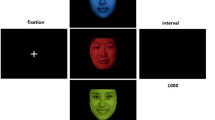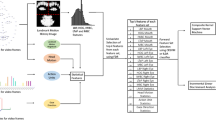Abstract
The investigation of attentional bias of depression based on P300 component has drawn interest within the last decades. Follow-up of previous research suggested the differential amplitudes between depression and normal controls (NCs) in response to various facial stimuli. In this paper, we used single-trials features in the occurrence of P300 to recognize depression from NCs. EEG activity was recorded from 24 patients and 29 NCs in a dot-probe task. We considered two traditionally used feature-extraction methods: ReliefF and principal component analysis (PCA). Then, the k-nearest neighbor (KNN), BFTree, C4.5, logistic regression and NaiveBayes were adopted in this study to make a performance comparison. The combination of NaiveBayes and PCA was applied to classify the P300 component evoked by sad-neutral pairs, which achieved higher classification accuracy than other classifiers. The classification accuracy was 98%. The classification results support that the P300 component of ERPs may reflect information processing of the specific response of depression to specific stimuli and may be applied as a physiologic index for aided diagnosis of depression in future research.
Access this chapter
Tax calculation will be finalised at checkout
Purchases are for personal use only
Similar content being viewed by others
References
Santini, Z.I., Koyanagi, A., Tyrovolas, S., Mason, C., Haro, J.M.: The association between social relationships and depression: a systematic review. J. Affect. Disord. 175, 53–65 (2015). https://doi.org/10.1016/j.jad.2014.12.049
Delaveau, P., et al.: Brain effects of antidepressants in major depression: a meta-analysis of emotional processing studies. J. Affect. Disord. 130, 66–74 (2011). https://doi.org/10.1016/j.jad.2010.09.032
Etkin, A., Schatzberg, A.F.: Common abnormalities and disorder-specific compensation during implicit regulation of emotional processing in generalized anxiety and major depressive disorders. Am. J. Psychiatry. 168, 968 (2011). https://doi.org/10.1176/appi.ajp.2011.10091290
Li, X., et al.: Attentional bias in MDD: ERP components analysis and classification using a dot-probe task. Comput. Methods Programs Biomed. 164, 169–179 (2018). https://doi.org/10.1016/j.cmpb.2018.07.003
Spielberger, C.D., Reheiser, E.C.: Assessment of emotions: anxiety, anger, depression, and curiosity. Appl. Psychol.: Health Well-Being 1(3), 271–302 (2009). https://doi.org/10.1111/j.1758-0854.2009.01017.x
Sung, M., Carl, M., Alex, P.: Objective physiological and behavioral measures for identifying and tracking depression state in clinically depressed patients (2010)
Li, X., et al.: A resting-state brain functional network study in MDD based on minimum spanning tree analysis and the hierarchical clustering. Complexity 2017, 1–11 (2017). https://doi.org/10.1155/2017/9514369
Kim, E.Y., et al.: Gender difference in event related potentials to masked emotional stimuli in the oddball task. Psychiatry Investig. 10, 164–172 (2013). https://doi.org/10.4306/pi.2013.10.2.164
Kalatzis, I., et al.: Design and implementation of an SVM-based computer classification system for discriminating depressive patients from healthy controls using the P600 component of ERP signals. Comput. Methods Programs Biomed. 75, 11–22 (2004). https://doi.org/10.1016/j.cmpb.2003.09.003
Kaiser, S., Unger, J., Kiefer, M., Markela, J., Mundt, C., Weisbrod, M.: Executive control deficit in depression: event-related potentials in a Go/Nogo task. Psychiatry Res. Neuroimaging 122(3), 169–184 (2003). https://doi.org/10.1016/s0925-4927(03)00004-0
Luck, S.J., Woodman, G.F., Vogel, E.K.: Event-related potential studies of attention. Trends Cogn. Sci. 4, 432–440 (2000)
Dai, Q., Feng, Z.: More excited for negative facial expressions in depression: Evidence from an event-related potential study. Clin. Neurophysiol. 123(11), 2172–2179 (2012). https://doi.org/10.1016/j.clinph.2012.04.018
Delle-Vigne, D., Wang, W., Kornreich, C., Verbanck, P., Campanella, S.: Emotional facial expression processing in depression: Data from behavioral and event-related potential studies. Neurophysiologie Clinique-clinical Neurophysiol. 44, 169–187 (2014)
Ham, K., Chin, S., Suh, Y.J., Rhee, M., Chung, K.-M.: Preliminary results from a randomized controlled study for an app-based cognitive behavioral therapy program for depression and anxiety in cancer patients. Front. Psychol. 10 (2019)
Lecrubier, Y., et al.: The mini international neuropsychiatric interview (MINI). A short diagnostic structured interview: reliability and validity according to the CIDI. Eur. Psychiatry 12, 224–231 (1997). (in English). https://doi.org/10.1016/S0924-9338(97)83296-8
Lu, B., Hui, M.A., Huang, Y.X.: The development of native Chinese affective picture system-a pretest in 46 college students. Chin. Mental Health J. 19(11), 719–722 (2005)
Jung, T.P., et al.: Removing electroencephalographic artifacts by blind source separation. Psychophysiology 37, 163–178 (2000)
Leutgeb, V., Sarlo, M., Schöngassner, F., Schienle, A.: Out of sight, but still in mind: electrocortical correlates of attentional capture in spider phobia as revealed by a ‘dot probe’ paradigm. Brain Cogn. 93, 26–34 (2015)
Hjorth, B.: EEG analysis based on time domain properties. Electroencephalogr. Clin. Neurophysiol. 29, 306–310 (1970)
Robnik-Šikonja, M., Kononenko, I.: Theoretical and empirical analysis of ReliefF and RReliefF. Mach. Learn. 53, 23–69 (2003)
Kota, S., Gupta, L., Molfese, D.L., Vaidyanathan, R.: A dynamic channel selection strategy for dense-array ERP classification. IEEE Trans. Bio-med. Eng. 56, 1040 (2009). https://doi.org/10.1109/TBME.2008.2006985
Kuncheva, L.I., Rodríguez, J.J.: Interval feature extraction for classification of event-related potentials (ERP) in EEG data analysis. Progress Artif. Intell. 2, 65–72 (2013)
Pechenizkiy, M.: The impact of feature extraction on the performance of a classifier: kNN, Naïve Bayes and C4.5. In: Kégl, B., Lapalme, G. (eds.) AI 2005. LNCS (LNAI), vol. 3501, pp. 268–279. Springer, Heidelberg (2005). https://doi.org/10.1007/11424918_28
Khatun, S., Morshed, B.I., Bidelman, G.M.: A single-channel EEG-based approach to detect mild cognitive impairment via speech-evoked brain responses. IEEE Trans. Neural Syst. Rehabil. Eng. 27, 1063–1070 (2019). https://doi.org/10.1109/TNSRE.2019.2911970
Mao, X., Hou, J.: Object-based forest gaps classification using airborne LiDAR data. J. Forestry Res. 30, 241–251 (2019). CNKI:SUN:LYYJ.0.2019-02-023
Liu, X., et al.: Relationship between the prefrontal function and the severity of the emotional symptoms during a verbal fluency task in patients with major depressive disorder: a multi-channel NIRS study. Progress Neuropsychopharmacol. Biol. Psychiatry 54, 114–121 (2014). https://doi.org/10.1016/j.pnpbp.2014.05.005
Acknowledgement
This work was supported in part by the National Key Research and Development Program of China (No. 2019YFA0706200), in part by the National Natural Science Foundation of China (Nos. 61632014, 61627808, 61210010), in part by the National Basic Research Program of China (973 Program, No. 2014CB744600), in part by the Program of Beijing Municipal Science & Technology Commission (No. Z171100000117005), in part by the Typical Application Demonstration Project of Shandong Academy of Intelligent Computing Technology (No. SDAICT2081020), and in part by the Fundamental Research Funds for the Central Universities (Nos. lzujbky-2017-it74, lzujbky-2017-it75, lzujbky-2019–26).
Author information
Authors and Affiliations
Corresponding author
Editor information
Editors and Affiliations
Rights and permissions
Copyright information
© 2021 Springer Nature Singapore Pte Ltd.
About this paper
Cite this paper
Zhang, W., Gong, T., Li, J., Li, X., Hu, B. (2021). A Study Based on P300 Component in Single-Trials for Discriminating Depression from Normal Controls. In: Sun, Y., Liu, D., Liao, H., Fan, H., Gao, L. (eds) Computer Supported Cooperative Work and Social Computing. ChineseCSCW 2020. Communications in Computer and Information Science, vol 1330. Springer, Singapore. https://doi.org/10.1007/978-981-16-2540-4_16
Download citation
DOI: https://doi.org/10.1007/978-981-16-2540-4_16
Published:
Publisher Name: Springer, Singapore
Print ISBN: 978-981-16-2539-8
Online ISBN: 978-981-16-2540-4
eBook Packages: Computer ScienceComputer Science (R0)





